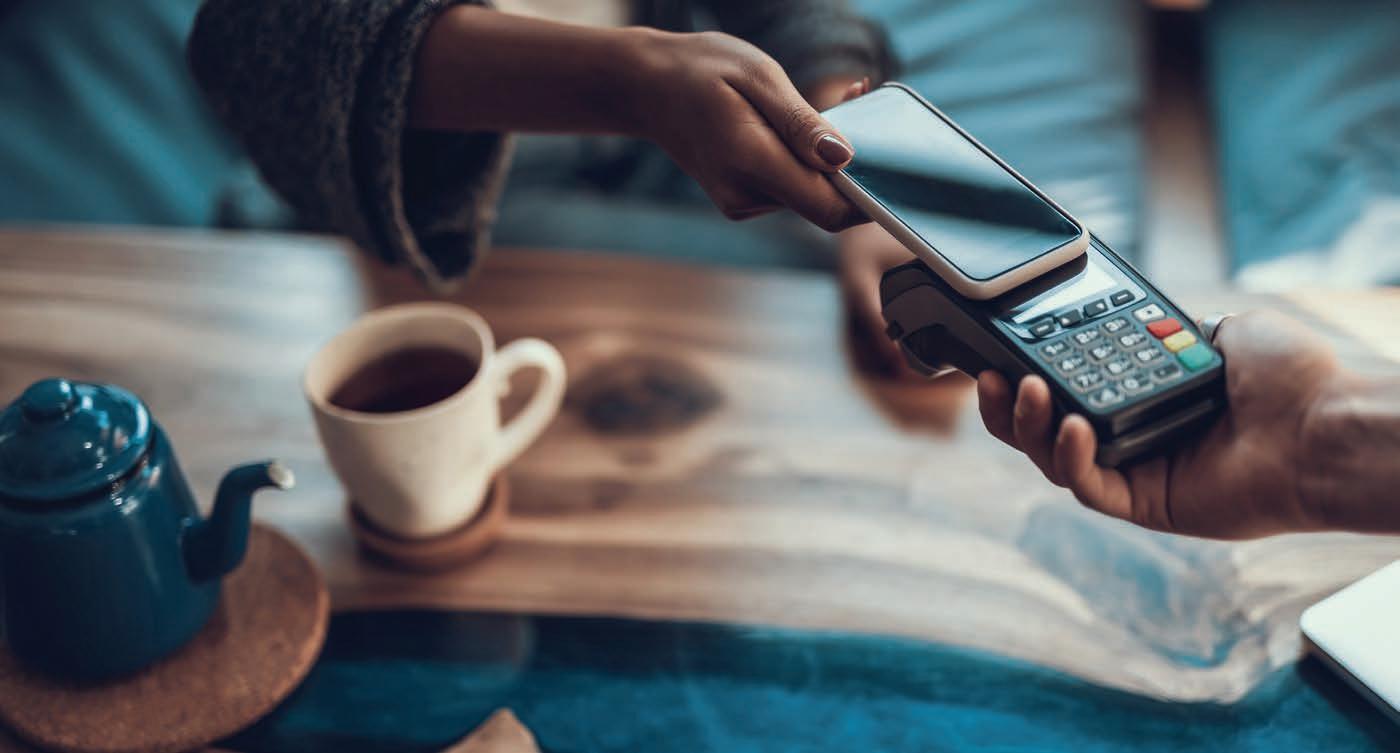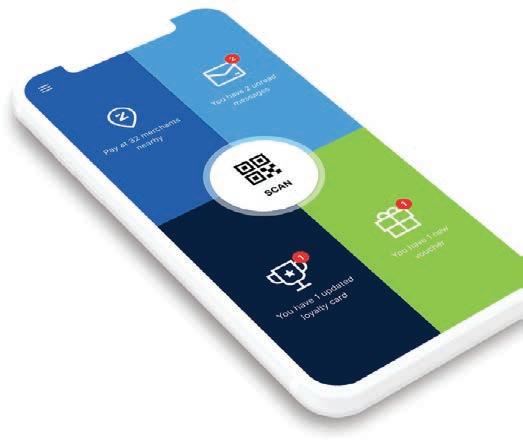
7 minute read
Technology
Getting smarter about tech
How are new technologies being leveraged to improve customer experiences and drive greater loyalty? By
ANTHONY SHARPE
We’re almost into the third decade of the third millennium AD. While our distant ancestors may once have kept track of their loyalty points using shells or particularly attractive pebbles, these days everyone seems to have an app.
“Most loyalty programmes are looking to enhance the digital transformation of their programmes,” says Steve Burnstone, CEO of customer strategy consultancy Eighty20. “On the one end, a smartphone app can be a simple way to register and receive a digital card to be used at point of sale, or the app can be a channel to enable further engagement through gamification, redemption, and a host of valueadded features including vouchering, payments, locating your nearest store and so forth.”
Burnstone notes that although digital is the new normal and should thus be a part of any loyalty programme’s future roadmap, in South Africa physical cards actually remain the easiest way to get customers to engage with traditional brick-and-mortar stores. “If you are in the store and the sales agent offers you a card and free membership to receive a certain percentage back, then it is an easy acquisition. Once a customer has a card and membership, it’s a lot easier to migrate them to a digital card or app. However, plastic can be expensive – especially if it needs a chip and pin – and difficult to distribute to all stores.”
Location is everything
Geolocation and location-sensitive notifications are increasingly being used by brands to engage with customers in real time at key moments. “Most large property companies are looking at how the free WiFi services in their malls can be used to create a loyalty relationship with customers that includes location-based targeting for tenants,” says Burnstone. “Furthermore, beacon technology allows brands to pinpoint where a customer is at any given moment, and then send them push notifications with coupons, promotions or other targeted offers.”
Burnstone gives the example of a clothing retailer store that may send a promotion to a consumer near their location or while the individual is visiting a competitor. “A US study conducted by beacon platform Swirl found that 73 per cent of shoppers who received a beacon-triggered message on their smartphone said it increased their likelihood of making a purchase during a store visit, while 61 per cent said the message would prompt them to visit the store more often.”
Burnstone notes, however, that while there is value in informing a customer of nearby promotions, “there is greater value in understanding customer behaviour and using geolocation together with other information to offer relevant and timely offers or promotions to customers”.
MASTERCARD GOES AUGMENTED
Mastercard recently launched an app that uses augmented reality (AR) to help clients better understand the benefits of World or World Elite cards – their premium cards for affluent consumers and frequent travellers. Scanning their Mastercard with the app creates three portals: Experiences, Everyday Value and Peace of Mind, which are illustrated into 360-degree AR. “Loyalty programmes are a key driver of card use and preference, particularly among affluent consumers,” says Mastercard spokesperson Raja Rajamannar.
“According to Javelin Advisory Services, for affluent consumers, rewards trump interest rates as the top reason a card is chosen. Our data shows that cardholders who redeem rewards or take advantage of a card-linked offer use their card more often and spend more using their card than cardholders who don’t.
“AR delivers an interesting way of illustrating rewards by engaging cardholders with content that’s more immersive than other static environments. In a world where it is increasingly difficult to reach and entertain consumers, AR enables us to take things like our own priceless experiences and benefits live in unique and engaging ways. This helps to inform and empower cardholders to maximise the full potential of their card benefits.”
Digital objects, real rewards
Surprise and delight have long been understood to be key drivers of customer loyalty. And while these don’t necessarily have to be achieved through big, expensive rewards, they do need to be carefully thought out.
That’s the view of Jon Knight, head of partnerships at BLOCKv, a company that creates virtual goods on blockchains. Knight believes micro-rewards can offer strong incentives at little cost. He gives the example of credit cards: “Imagine if, rather than competing on interest rates or dry points, every third time you paid using your card, the card company sent you a gift box on your phone. If you tap to open it, you get a reward.”
The gift box is represented by something called a Vatom – a digital object that can be dropped on a map, captured in augmented or virtual reality, stored or transferred, and redeemed for anything from theatre tickets to a cup of coffee. “Micro-rewards like this create those surprise and delight moments, the breadcrumbs that build a stronger psychological relationship with a brand,” says Knight.
Knight says that partnerships are key. “Imagine a coffee shop is looking for new customers and they partner with a major card provider, which for a nominal fee provides every customer who uses their card within a mile of the coffee shop with a digital sampler they can redeem in-store.” The goal, Knight says, is to create an ecosystem where big brands can monetise their customer base and build new loyalty, customers can get rewards they actually enjoy, and smaller companies can get market exposure. “It’s win, win, win.”

APP-ATHY
While getting users to register for an app is seen as a natural evolution for loyalty programmes, Jon Knight of BLOCKv cautions that consumers are tired of downloading loads of apps they never use. “Web browsers have become so advanced that you can emulate most of the features of an app – with the advantage that the consumer doesn’t need to download the app, reducing friction.”
Knight suggests brands opts for a tiered system. “Offer a competent, fully featured web experience, then if you want them to download the app later, incentivise it.”


Can tech make loyalty more rewarding?


One of the key ways in which technology can help consumers maximise the benefi ts of their rewards programmes and make redemption easier is through the convergence of payment methods and loyalty. The Truth and BrandMapp South African Loyalty Landscape Whitepaper 2019/2020 found that ease of redemption was one of the key pain points for consumers: 21 per cent of respondents reported that redeeming points or rewards was too complicated.
“If we look at the evolution of payment, loyalty programmes have also evolved in parallel to this,” says Amanda Cromhout, CEO of loyalty consultancy Truth. “We used to pay with cash, then via credit card, then we moved on to tap-and-go, mobile payments, invisible payments – and now Sweden is trialling payments via microchips embedded in one’s skin. There is no reason why loyalty should be different to this, fully embedded in a cellphone app, so you can have invisible loyalty earning.”
Convergence point
“From the customer perspective, there is a need for consolidation of programmes, but I don’t think brands and programme owners are necessarily ready to give up the control of their brands or rewards currency which is necessary to provide that kind of service,” says Steve Burnstone, CEO of Eighty20.
He says some start-ups have tried to get this model He says some start-ups have tried to get this model working among the big brands, but that while they working among the big brands, but that while they understand the value, they’ll only participate if others do too. understand the value, they’ll only participate if others do too. “You need a few key programme owners to get involved to create “You need a few key programme owners to get involved to create critical mass for others then to join, or you will need a platform critical mass for others then to join, or you will need a platform disruptor like an Amazon or Apple entering this space and forcing a disruptor like an Amazon or Apple entering this space and forcing a response from programmes.”
Should this take off, Burnstone says there are two immediate Should this take off, Burnstone says there are two immediate possibilities. “You could have a basic aggregator app with limited functionality possibilities. “You could have a basic aggregator app with limited functionality that shows how much you’ve earned, enabling points exchange or redemption with a click through to the owner website to interact further. On the other hand, a set of strategic alliances between programmes or a coalition could create something with much richer integration and an enhanced value proposition for the customer.”
Burnstone says the most likely aggregation space is in payments and banking. He gives the example of mobile payment, customer loyalty and rewards platform Zapper, which has included a number of SME merchants that have loyalty programmes on the Zapper app. When you use Zapper, you automatically get a reward, providing a frictionless experience for the consumer.











